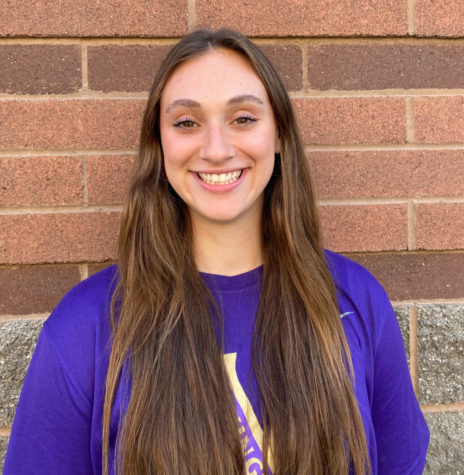Dust collects along the counter tops where pencils and pens were once tossed and papers laid gently. Where desks once stood for students to receive information on, molecules and chemical mixtures are now absent. All that remains are cold linoleum floors that are never to be touched by the soles of a student’s shoes again. 
AP Environmental Science teacher Katie Coats and AP Chemistry teacher Christyna Paris share the struggles they’ve been forced to overcome over the last several months and what they hope for in the near future.
Coats, whose class formally resided in the upstairs portion of the now closed building, says she feels fortunate to have been placed in her new classroom, which is now located by the upper gym.
“I have everything I need here. I’m one of the lucky ones, probably the only person in the whole school who moved into a better space. And I only got it because a teacher retired,” Coats said.
Paris, unfortunately, was moved into a regular classroom, which is not remotely close to being designed like a science classroom. The room lacks items and tools she says she needs to properly run a rigorous course such as AP Chemistry.
“It’s really affected the rhythm of the class,” Paris said, “Normally, we have Bunsen burners the second week of class, but you can’t have smoke in a room that doesn’t have ventilation. We’re trying to find ways to make it engaging and fun and interesting, but it’s not the same class.”
While Coats says she feels blessed to have been moved into the class she is currently in, there are aspects of her old classroom she says she wishes her new one offered.
“I miss the windows. I can’t see any sky from here, like last year I almost never had my lights on because the window light was bright enough. And I love weather, I can’t even tell if it’s raining,” Coats said.
For Paris’s class, she says her lessons are much more broken up and not as fluid as they once were.
“I used to have the lecture connected to the lab. I could send students over and I could demonstrate lab stuff while my students were in class. I would bring over the access so I could safely demonstrate [labs],” Paris said.
An unseen struggle of being moved to different classrooms is the tight-knit community of science teachers that have been scattered about campus. With there no longer being a teachers lounge; socialization among the science teachers has been lost.
“I spent eight years in the Library-Science Building and we had a tight community up there. I love the people that I work with, but it’s very different not seeing my science people every day, we used to talk every day. Now it’s just when we can,” Paris said.
Coats agrees there is a serious lack of socialization between her and her science colleagues.
“We’re missing that shared space. We’re together during staff meetings and there’s usually a short period of socialization but then it’s down to business,” Coats said, “We don’t have a shared space to socialize, some teachers get lunch together. There is an inclination to support each other, but there are still barriers to that.”
Having a closed building was something no student or staff was prepared for. Figuring out how to navigate this type of hurdle is no simple task. Paris believes that the high school administration have been and are continuing to help to the best of their ability considering the situation at hand.
“I think it’s mostly things that are under the control of people that are local, I know that everybody is trying their hardest, it’s just a terrible situation that I don’t think that anybody foresaw,” Paris said.
Coats, like Paris, believes that this is a difficult situation for everyone to navigate and find areas to help in.
“I feel like they could be more helpful, but I don’t know what they should do. I do feel like their [administrators] hands are tied,” Coats said, “But [Assistant Principal] Mark Barnes worked really hard to get us all the boxes we need and all the labels, the packing materials. If we needed help moving anything, he just put it on his list and made sure it was done.”


